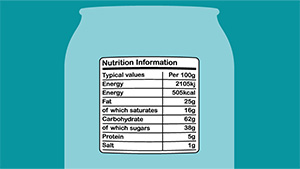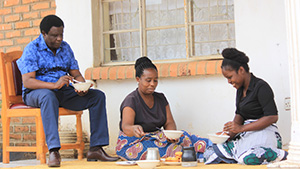DIETARY GUIDANCE
Eating well
Healthy eating across the world, and not just in Malawi, is about consuming the right amount of food for your energy needs and the right balance of foods to make sure your body gets all the nutrients it needs.
To help achieve this, the second edition of the Sustainable Nutrition Manual (23) – endorsed by Malawi’s Agriculture Technology Clearing Committee (ATCC) – sets out the six main groups required for the diet. These six classes of nutrients work together to perform three essential functions for our bodies: provide energy, protect us from disease, and promote growth.
- Proteins help make the body strong. Bones, hair, muscle and skin are built from proteins.
- Carbohydrates provide energy that is not stored in the body for long periods of time.
- Fats provide energy that can be stored in the body for long periods of time, if
needed. Any excess energy that a person consumes and doesn’t use is stored as fat. - Vitamins protect the body from infection and disease.
- Minerals allow the body to perform essential functions in our bones, teeth, blood, skin and hair.
- Water allows the body to maintain all its functions and continually removes waste products. The body cannot survive more than a few days without water.
A balanced diet
The Sustainable Nutrition Manual (23) guidance recommends choosing a variety of different foods from each of the groups so your body can get the wide range of nutrients it needs.
 Even though there are many options for each food group, it doesn’t mean that you must eat all those foods in one day. You also don’t have to eat all the food groups at every meal, but by the end of the day you should have eaten from each group:
Even though there are many options for each food group, it doesn’t mean that you must eat all those foods in one day. You also don’t have to eat all the food groups at every meal, but by the end of the day you should have eaten from each group:
- Fruits, vegetables and legumes (beans, pulses, peas) and nuts combined should cover more than half of your plate
- Staples (cereals, roots, and tubers) should cover just over a quarter of the plate
- Animal foods and fats should each be the smallest.
The above summary is adapted from the Sustainable Nutrition Manual available as a free download at: www.NeverEndingFood.org/Sustainable-Nutrition-Manual
| SUGAR FACTS |
|---|
| Your body doesn’t distinguish between sugars used in manufacturing or in the kitchen, and those sugars found naturally in fruits and vegetables. For example, sucrose in an apple is broken down in exactly the same way as the sucrose in your sugar bowl. However, the rate of which the sugar (sucrose) is absorbed can vary depending on if the source is a solid or liquid food, for example, in an apple or apple juice. |
| Sugar has four calories per gram compared to protein (four calories), fat (nine calories) and alcohol (seven calories). |
| White and brown sugars are both made from sugar cane or sugar beet (although sugar beet is not grown in Malawi – it is grown in more temperate parts of the world). Brown sugar is essentially white sugar combined with molasses, which provides the dark colour, characteristic flavour and texture. The darker brown the sugar, the higher the amount of molasses. |


